Atelier Volpe
The project “Living in a stone” began with a questioning around the relationship between stone and living. This question “how to inhabit the stone”, has gradually turned into “can we inhabit a stone?
Since time immemorial, stone has been the material for man’s habitat. Primitively, man found refuge in the caves, these natural cavities nestled in the sides of the mountains. These dark and mono-oriented, yet intimate and protective spaces offered shelter from the outside world. Thus, the stone has always been synonymous with protection. Its thickness and massiveness give man a feeling of security. Moreover, stone has particular technical qualities; it carries, breathes, filters and can store energy thanks to its inertia. The stone exists, through the protection on a phenomenological level, and on a material level, thanks to its technical characteristics. It protects and carries. This duality is intrinsically linked to the material itself. Indeed, the stone is by essence a finished and limited material, and yet it refers to the notion of permanence, of durability, life passes, man passes but the stone remains, it is infinite.
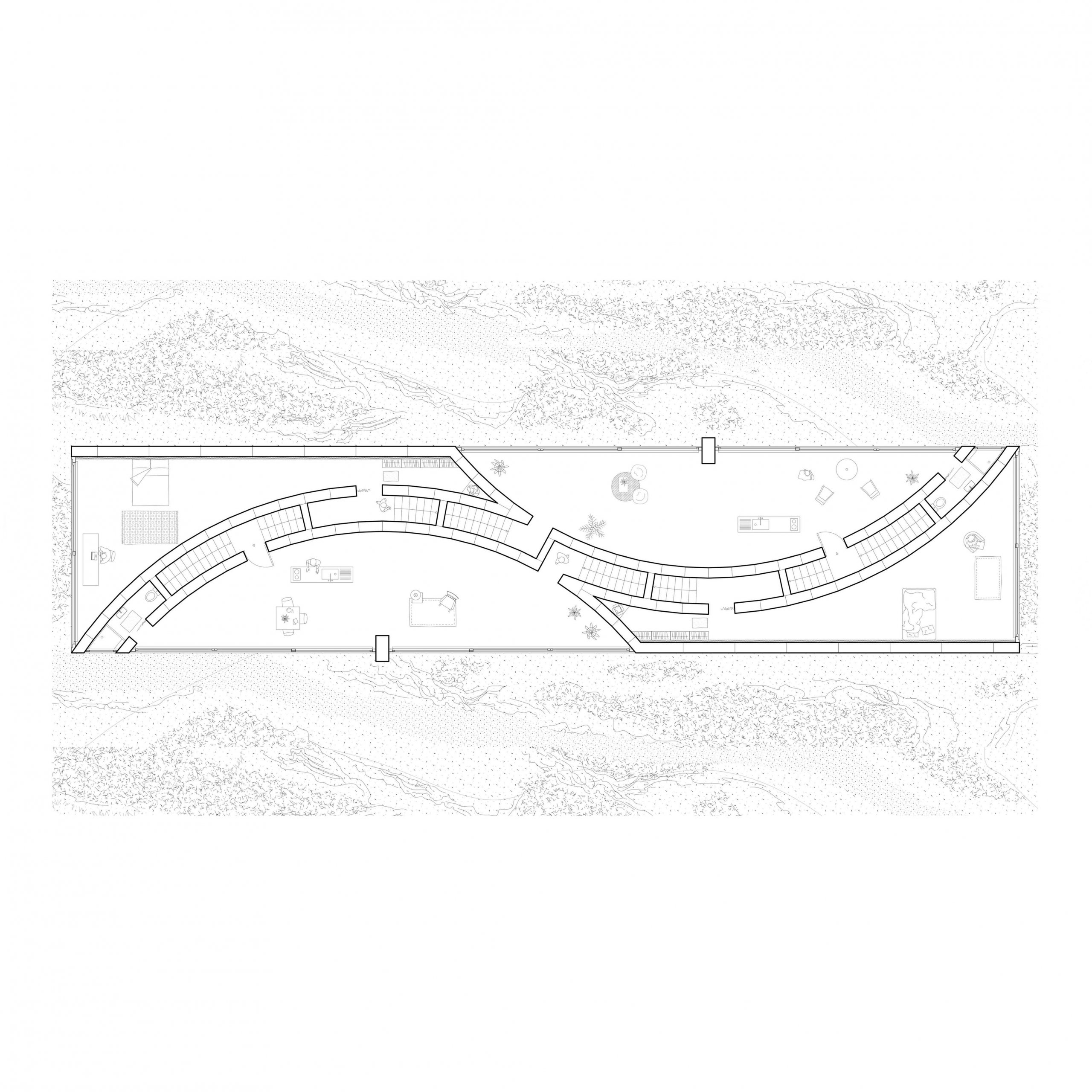
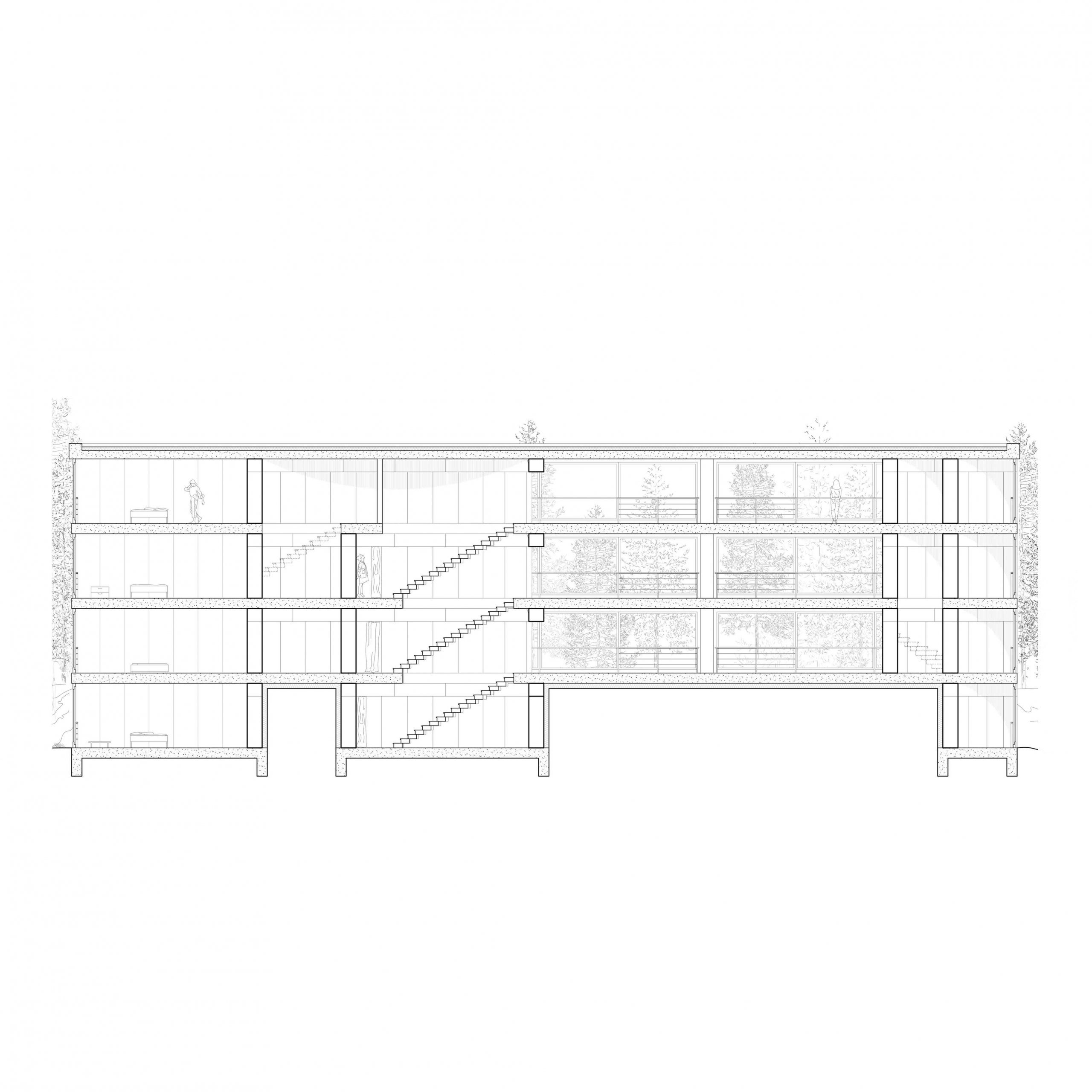
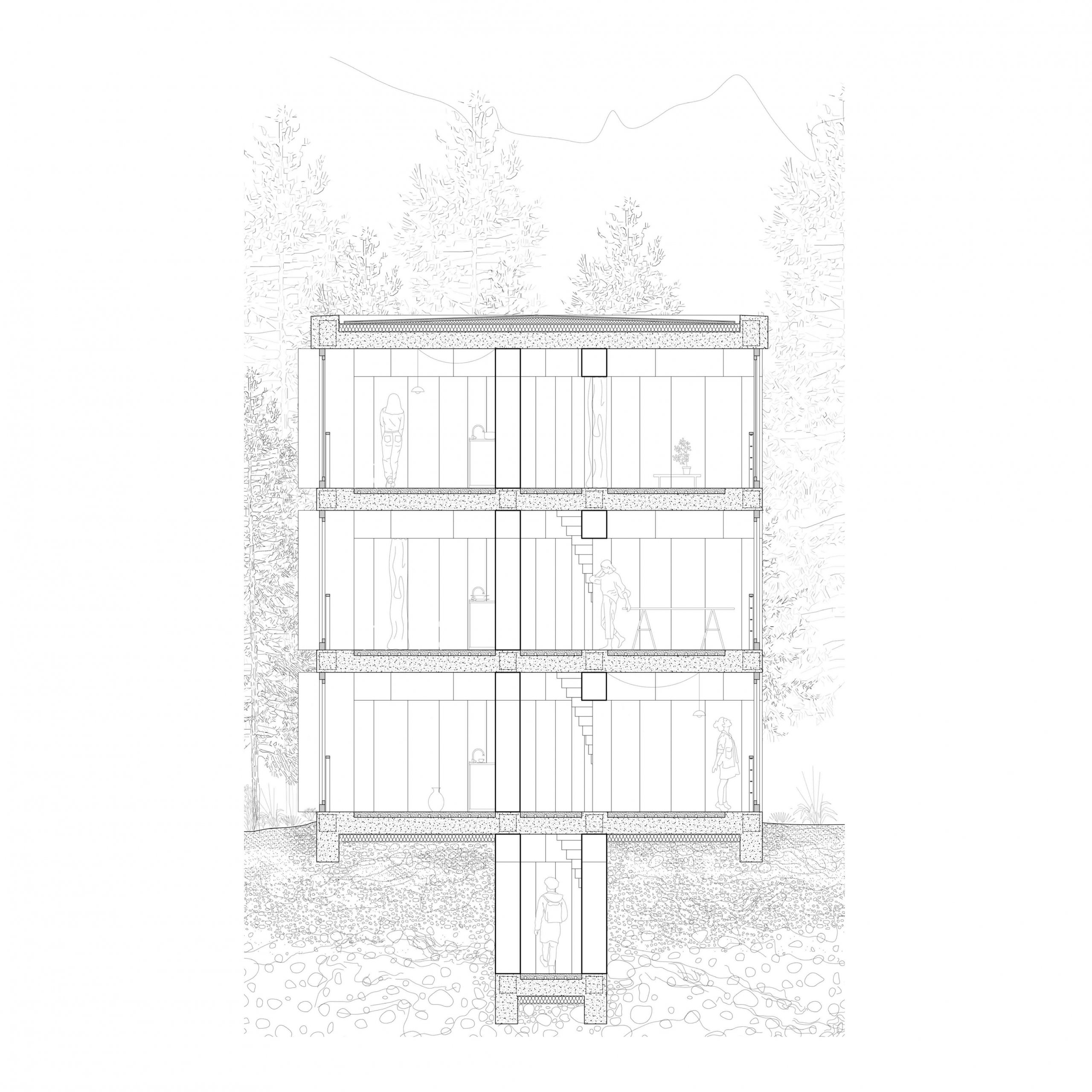

Stone is a dense and compact material, and to live in it man needs emptiness and space. How to create this void necessary to inhabit. The caves, these primitive habitats, are in reality voids, of the matter dug, by the action of a force. This force in question is water. Indeed, water has the power to sculpt the rock, to create a void within the stone, by the phenomenon of erosion. Erosion is a process of degradation and transformation of the stone. This process leads to two main changes: the creation of porosity within the rock and polishing. This has been translated spatially in this project by the tunnel space and the pebble space. The tunnel is a hollow space within the stone which crosses it from end to end, and in which one can move.
The pebble, with its smooth and rounded shape, refers to the curved cavities of the rock, which offers reassuring spaces, where the contact with the material is pleasant. Thus, thanks to the action of water, living in a stone becomes possible. Its action, which allows the creation of two spaces: the tunnel and the pebble are the spaces necessary to inhabit. A space of circulation or the man moves: the tunnel. And a space of life where the man can settle down in the shelter: the pebble. “To live” is often defined by the word “to remain.” And according to Martin Heidegger the word remain means “to be content, put at peace. The word peace means that which is free, and free means to preserve from damage and threats.”
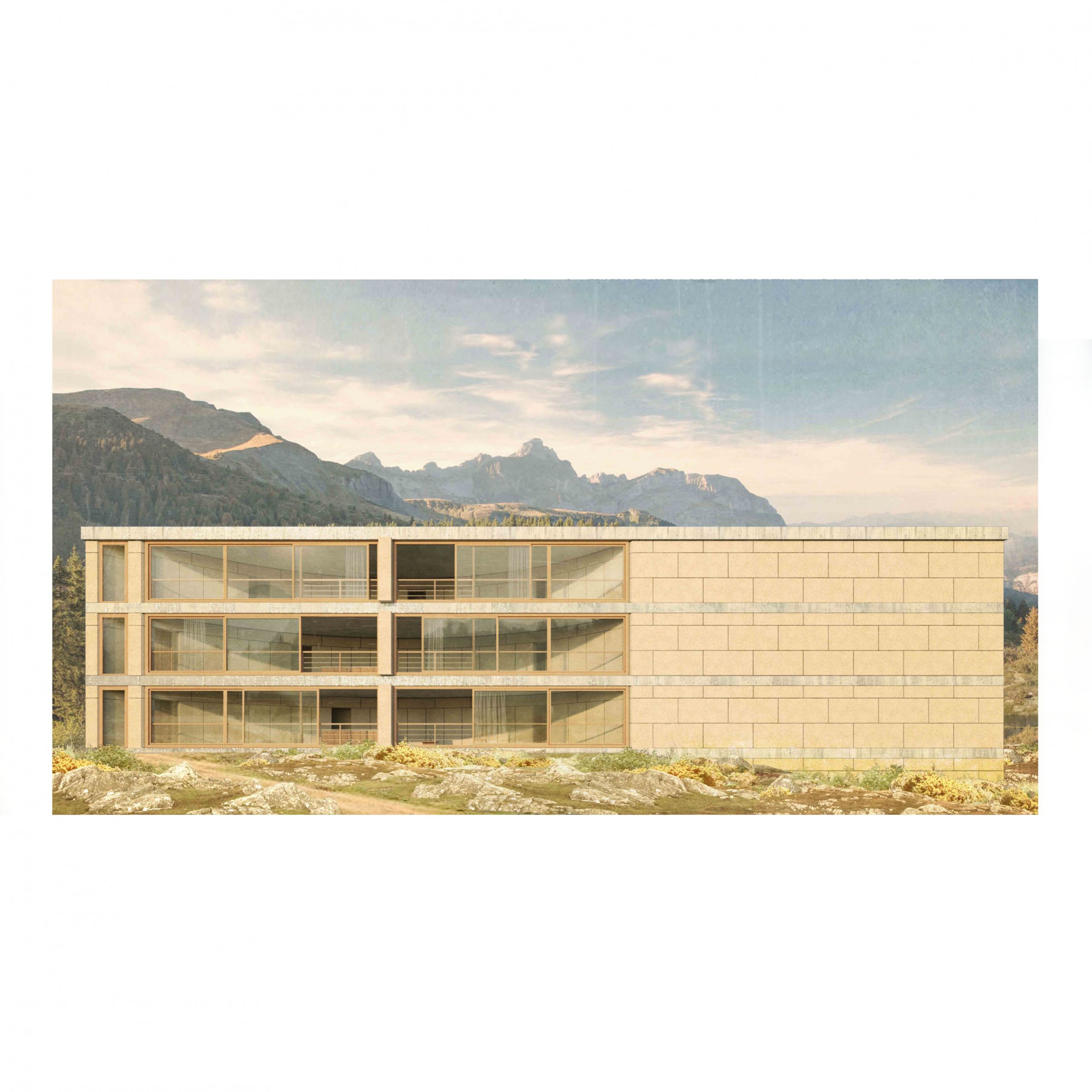
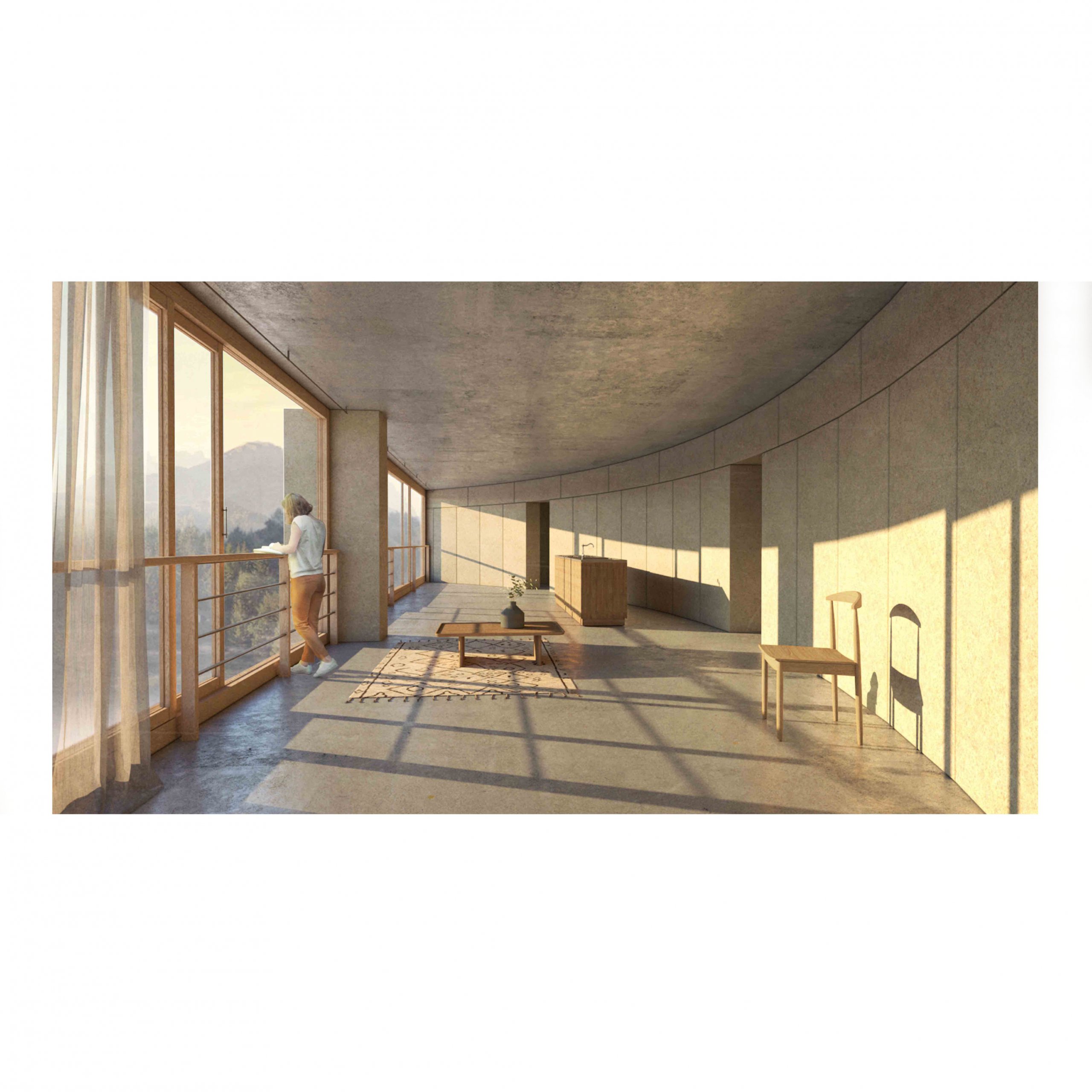
The stone has this power to preserve people from damage and threats thanks to its protective characteristics. It is easy to understand why the first habitat of man was the stone. The stone allows putting in peace. The project “Inhabiting a stone” aims, through a rereading of the primitive habitat of the first men, to create a habitable place for man to find peace. Following this reflection on the relationship between stone and living, we obtain this stone that can be carved to create the two types of spaces necessary for living. This stone must find a place to exist or take place and if it can be inhabited it is thanks to the action of water. It is therefore necessary to find a place where water and stone rub shoulders and transform each other. This is how the Plateau des Lacs, located in the Alps, came into the project.
Author: Atelier Volpe.
Website: ateliervolpe.fr
Location: Alps, France.
University: Ensa Montpellier.
Year: 2021
Competition: Building with structural stone 2021.
Prize: Second prize.
